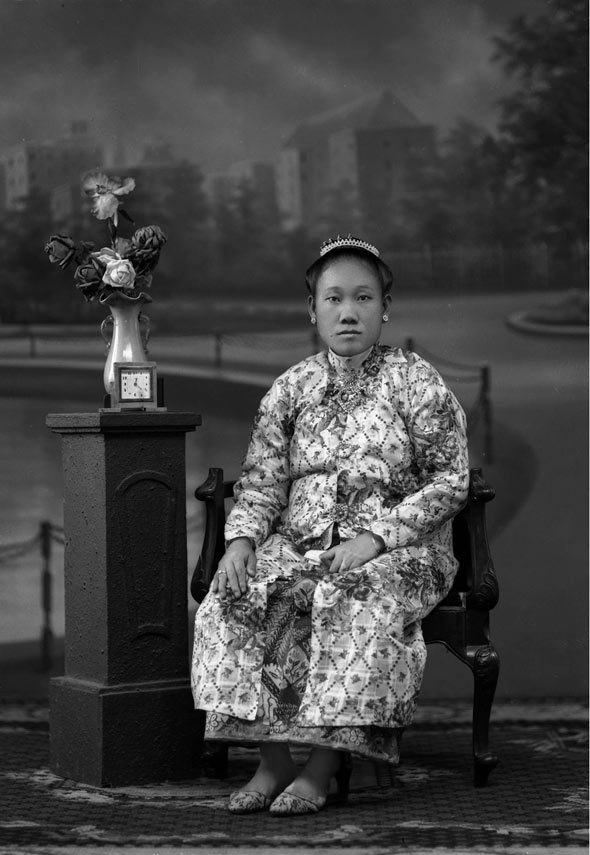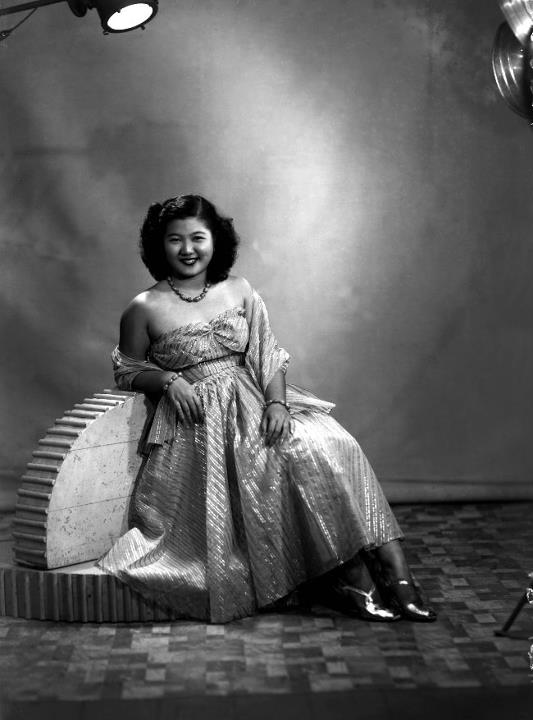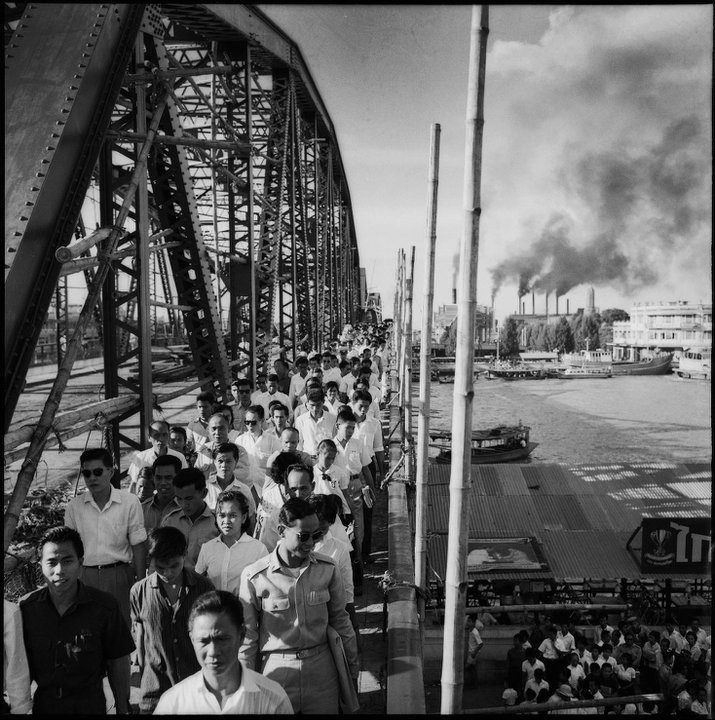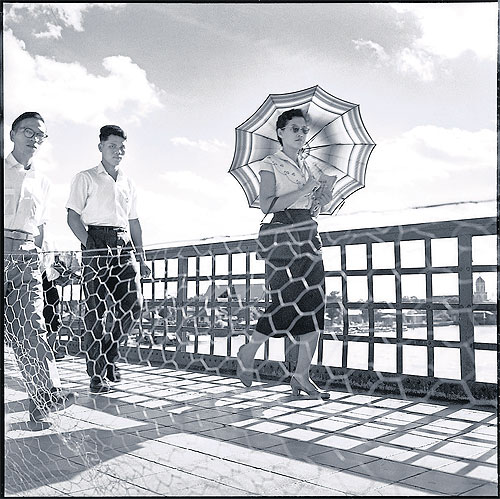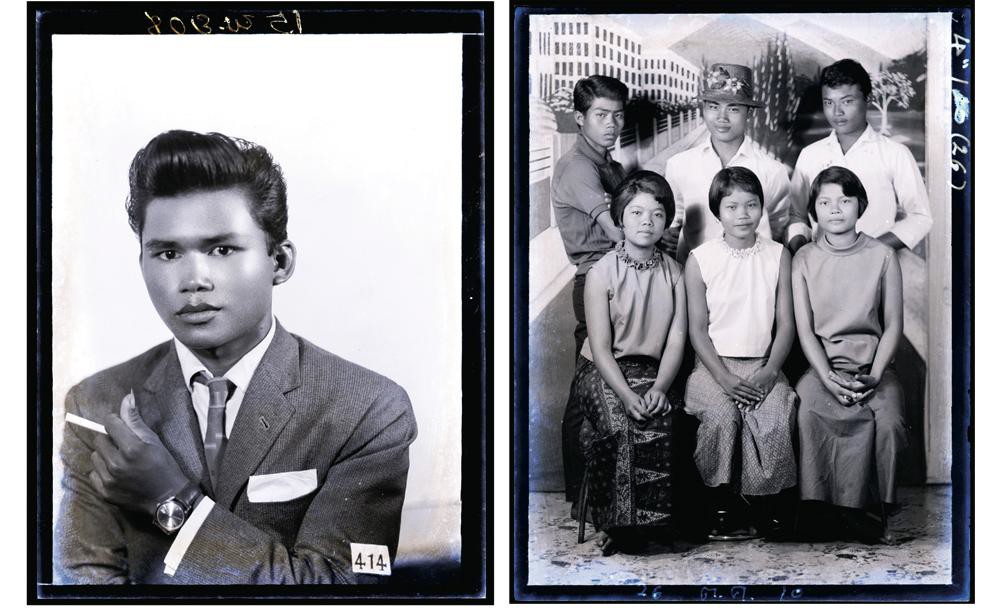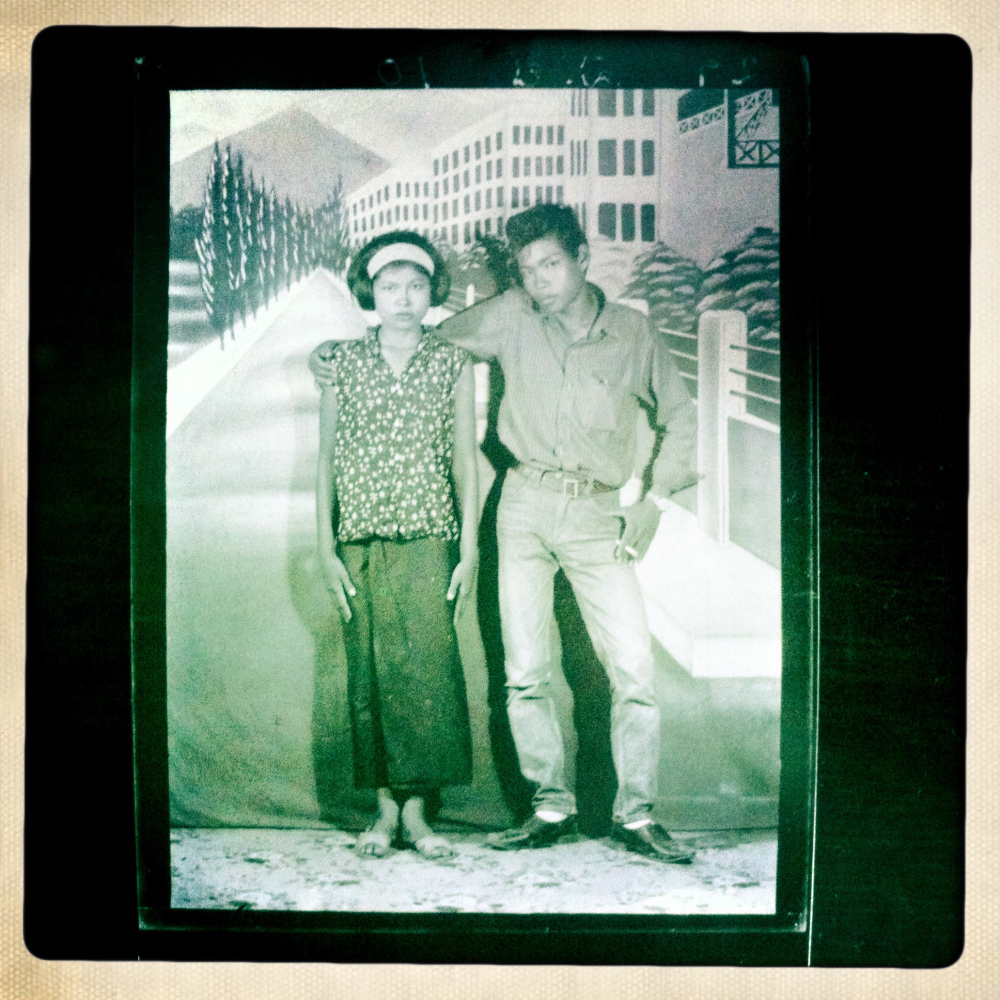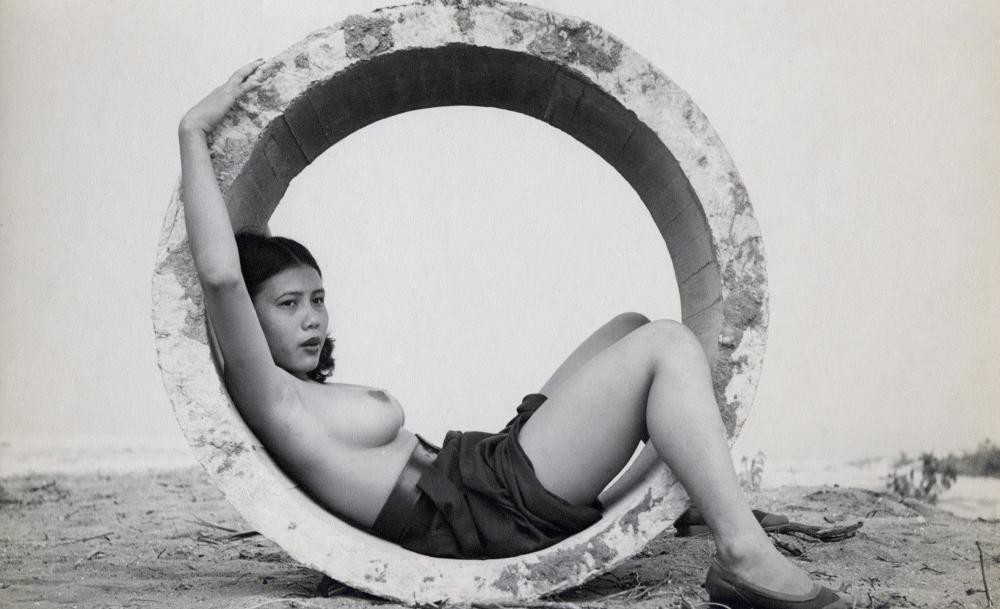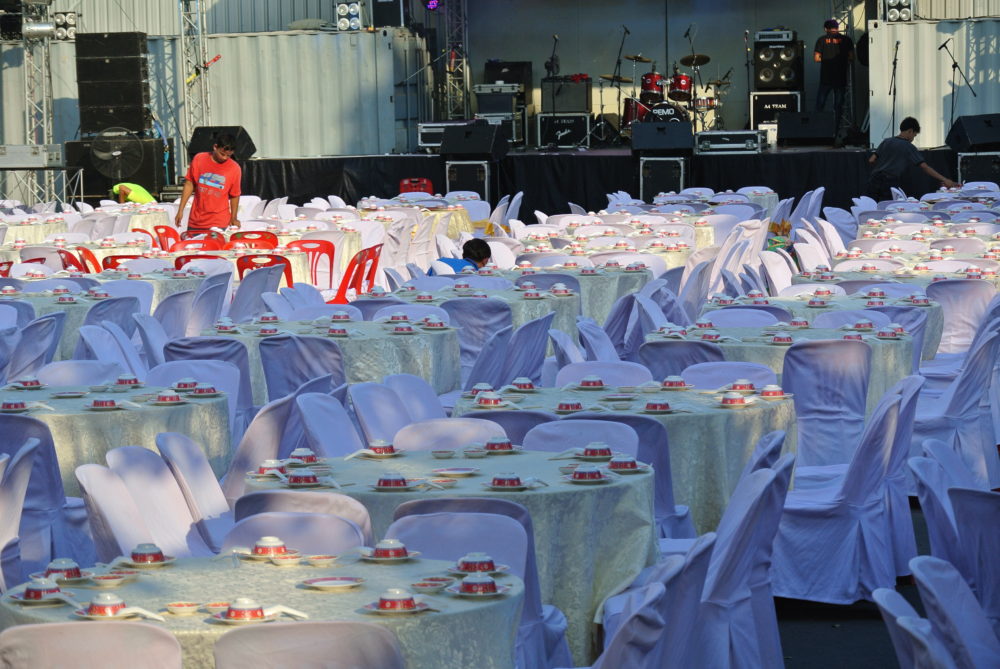
Getting ready for dinner, somewhere off Charoen Krung. Photo Padraig Rooney
My Bangkok flâneur credentials stretch back over four decades and come with a bit of bravado. I lived in the city for six years in the 1980s and have been here at least twice a year since then; it’s where my better half lives and works. In that far-off decade I freelanced for newspapers and magazines, and taught English at Chulalongkorn University so long ago I’ve had time to hone the anecdotes and smooth the rough edges. There were stints of kindergarten teaching and editing work in the Japanese embassy. Like all “old hands”, a phrase with a peculiarly post-colonial feel, we think our handle on things is the right one, backed by experience and even, maybe, expertise. Entrenched views tend to become more so over time, but happily, places and people evolve. Times change, cities too. And young fools make old fools. Bangkok is a city I’ve let go over time, and wish it well for its no doubt troubled and complex future. So much for the credentials.
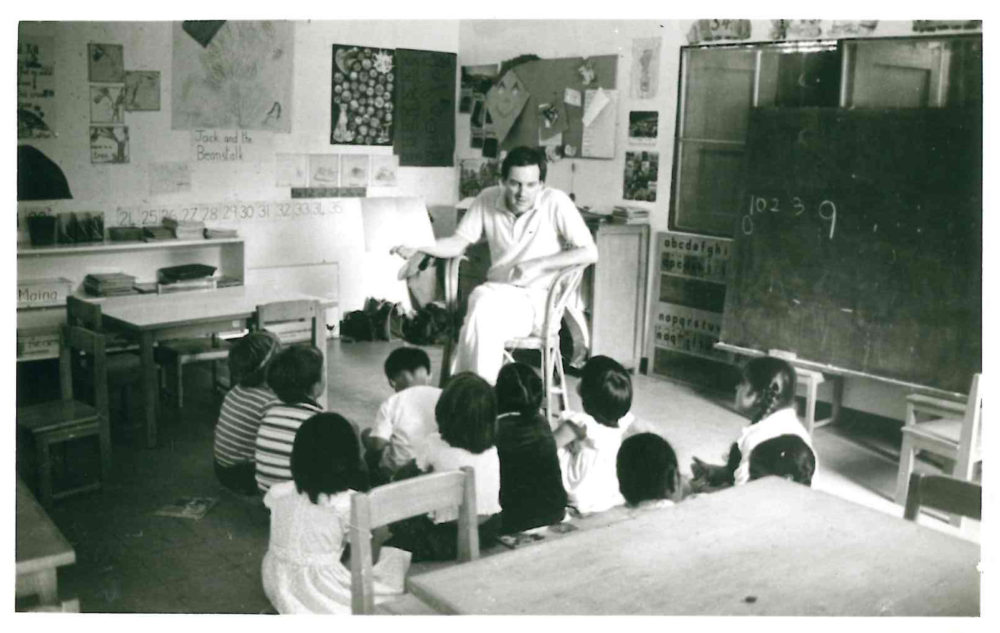
Sathorn Kindergarten, reading hour, 1985
Wandering around these past few days, visiting libraries and malls, has given me the pulse of the city. Bangkok is big, brash and noisy and it’s important to have bolt holes of quiet. My flânerie will include a couple of typically millennial coffee spot and design outlets – all that instagrammable stuff – because they’re in evidence. What photos don’t convey, particularly photos designed to sell, is the soupy, steamy air quality (currently ranked 9th in the world for smog, with Chiang Mai, the kingdom’s second city, not far behind) but also the sheer noise of the city where some ten million people live cheek by jowl.
I joined a journalism friend at the start of my flânerie for a visit to Zudragma Records, a vinyl shop just off Sukhumvit at Soi 51 Wattana (BTS Thonglor Station). Its a repository for all things Thai music of the rooted sort, as well as Asian music, any music that’s under-represented in the larger outlets. The vinyl is vintage, well sourced and screams authenticity, retailing at 800Bht. (25CHF / 23€ / 26$) and upwards. The neighbouring Studio Lam hosts podcasts, a radio station, music events and a bar, all showcasing “the heaviest luk thung and molam on the airwaves”, both musical styles well worth checking out. I’d been to Zudragma Records before and always wonder why there are hardly any customers buying the vinyl. Like a lot of speciality shops (and I’d include English language bookshops) it mystifies me how it keeps afloat in a sea of noise.
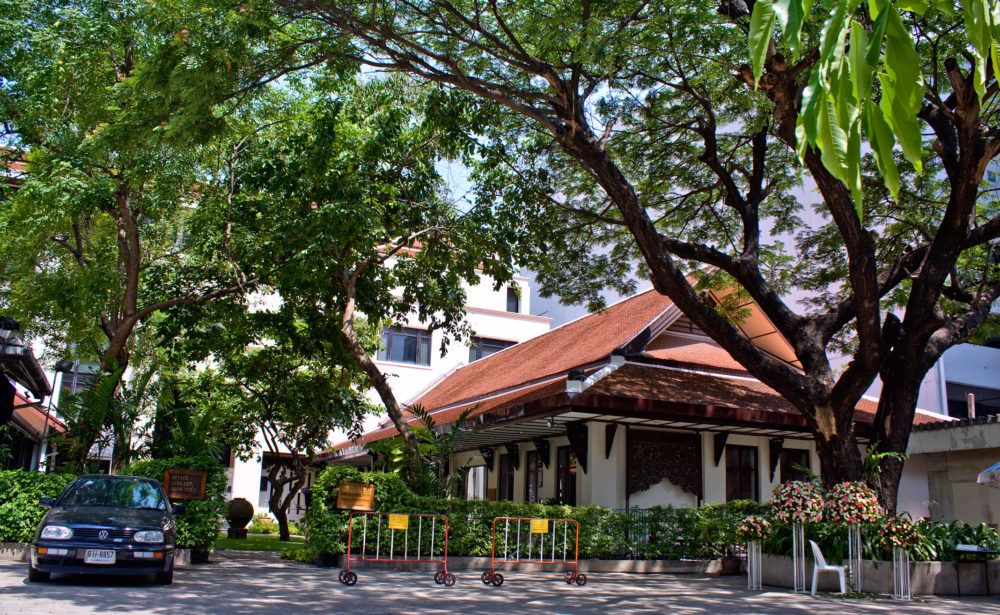
The Siam Society, Asoke, Bangkok
Founded in 1904, The Siam Society on Asoke has been a fixture of a certain kind of ex-pat and residential life for over a century. Under royal patronage, its purpose was “to encourage research and information gathering on art, history, culture and natural sciences of Thailand and neighbouring countries”. The library is a pleasure, their stacks and reading room overlook a rare green space in this part of town. It’s a library for all things Thai, Siam, South-east Asia and neighbouring countries, in English and Thai but also other languages. The colonial ones of the area – Portuguese and French – are represented. The teak wood trim and the subtle odour of old travellers accounts make the place redolent of a gentlemen’s club. Virtually all the authors conserved in the library are male, though most of the readers in the reading room were female when I visited. Those of us who carry in our heads a library of this part of the world will sink into this most welcoming space. D.A.R. Wood tells us what it was like to be a Consul in Paradise, up in Chiang Mai at the turn into the 20th century. Portuguese shipping accounts mix business and exoticism. Joseph Conrad sails through. Teak wallahs blithely recall the good old days of chopping down trees with impunity – plus ça change.

Chit (Jit) Phumisak, songwriter, activist, writer (1930-1966)
But I was on the hunt for a book by Jit (Chit) Phumisak’s โฉมหน้าศักดินาไทย (Chom Na Sakdina Thai) or The Real Face of Thai Feudalism, a radical text from this most elusive of Thai political theorists and philologists. He was allegedly executed by government henchmen in May 1966, under the dictatorship of Sarit Thanarat, shortly after Jit’s release from jail. That “allegedly” is carefully placed in the previous sentence. An inflammatory presence, therefore, even in death, and a test of any library’s liberal credentials. There is no copy of his most thought-provoking book on Thai shelves – at least publicly. A slim biography of Jit’s life and times, in Thai with illustrations, was available in Kinokunia bookshops. On the cover there is a photo of Jit in the infamous Lard Yao jail, dubbed Lard Yao University because it was a hive of reading, translating and discussion. His big philological treatise on the ramifications and meanings of the word “Siam” across several South-East Asian languages and cultures is available in academic bookshops. The Siam Society Library on-line catalogue lists three copies of the Thai Feudalism book, but I could find none on the shelves, nor were they listed as being borrowed. Hmmm.
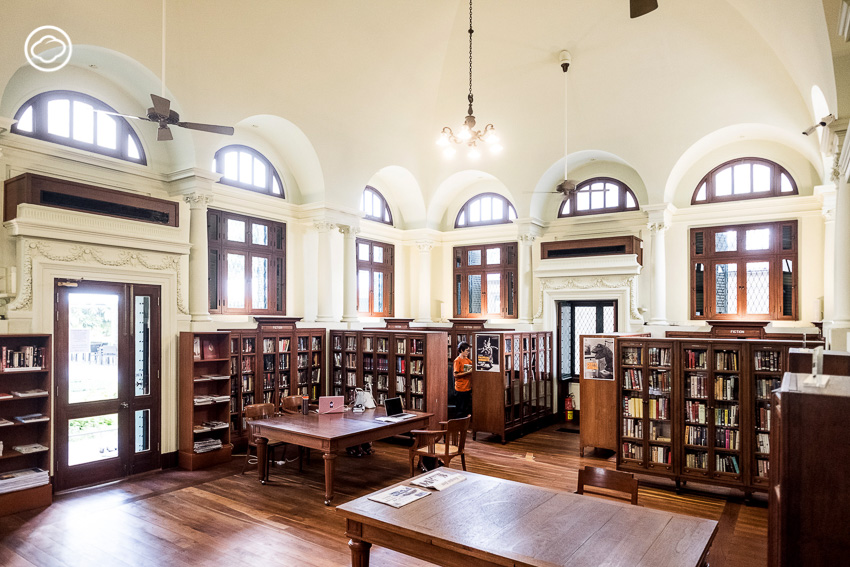
Interior of the neo-classical Neilson Hays Library on Suriwong Road
Another quiet bookish corner about ten minutes from home in Bangkok is the Neilson Hays Library on Suriwong Road. It’s an exclusively English library, founded in 1869 by the Bangkok Ladies’ Library Association, and housed in a pleasant neo-classical colonial building designed by Italian architect Mario Tamagno. He is also responsible, with Annibale Rigotti, for the Ananda Samakhom Throne Hall and the Hua Lampong Railway Station. The library is right next to the British Club and the quiet, cool coffee shop in the courtyard is fed by the same kitchen as the club. They do a full British and I can recommend the healthy breakfast. I remember a reading and signing in the library by Paul Theroux some time in the Eighties. And hanging round the British Club pool, drinking gin and tonic, after a morning teaching kindergarten. The library itself is well-stocked with fiction and biography, and I was glad to see a run of old Nabokov books in hardback in their mylar covers. Once I’ve done with teaching, I imagine spending a good deal more time in this recently restored library.

A run of Nabokov editions on the shelf of the Neilson Hays Library.
My journalist friend had recommended I check out the newly located Thailand Creative Design Center library, exhibition space and workshops on the 6th floor of the post office building on Charoen Krung Road. I’ve blogged about this Bauhaus brutalist building before here, with its Art Deco details. When I visited this time there was a school group being told about its history, sitting cross-legged on the floor in rows, in school uniform. I was both amused and dismayed to see, having chaperoned my fair share of school excursions, that half the kids were on their phones, scrolling and texting, while the teacher tried to interest them. Been there, done that.
Upstairs in the TCDC, there was an atmosphere of studied calm in the large library. The stacks are stocked with those ubiquitous large format books, copiously illustrated, pricey, that predominate in the shops but are hardly ever bought. They appeal to the visual-minded but also to the Instagrammer imagination, full as they are with photos of wannabe spaces, designer lofts, perfect tropical gardens and a minimalist, Scandi-inspired aesthetic. This aspirational aesthetic is all over bo-bo (bohemian bourgeois) Bangkok at the moment.
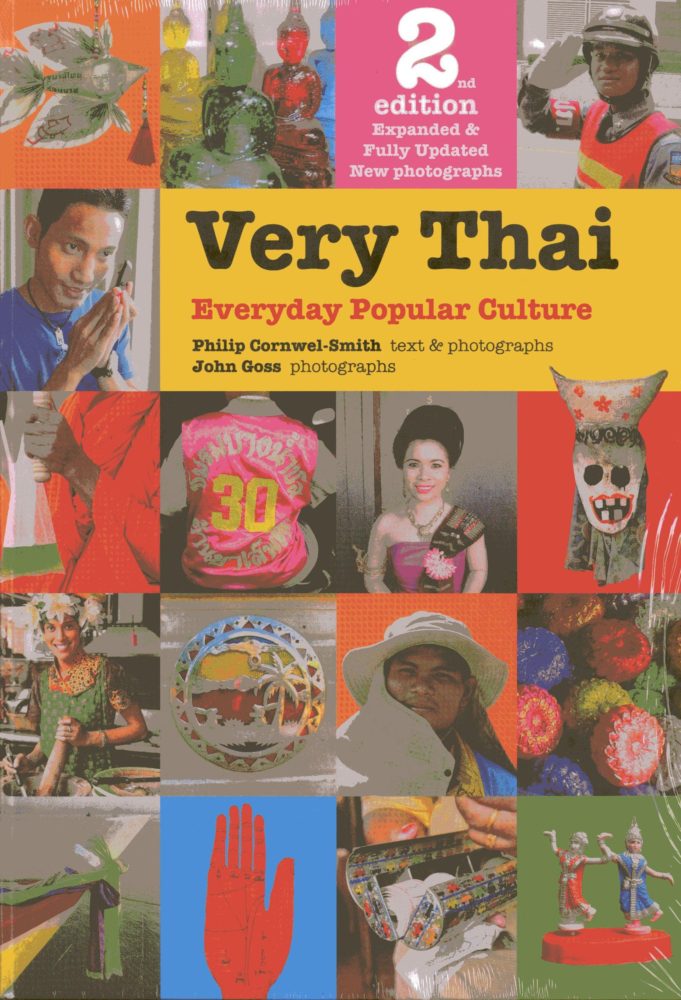
There was a fine, small exhibition upstairs, titled Invisible Things, featuring everyday objects from Thailand and Germany, which the curators deem to illustrate typical elements of each culture. The exhibition, supported by the Goethe Institute, is co-curated by Philip Cornwel-Smith, author of Very Thai: Everyday Popular Culture, a book I like for the refreshingly low level of gravity it exerts on the notion of culture; culture understood as filtering up from below rather than handed down from above. Cornwel-Smith is investigating “what gives a thing cultural meaning” and his selection of a street sign, a boundary marker, a day bed, Snake brand prickly heat talcum powder, a graduation photo, all reflect everyday aspects of Thai culture. German everyday objects include an Aldi bag, a portable bar-b-q etc.
Having moved from the rarefied heights of the up-market Emporium on Sukhumvit, the TCDC has come down to Bangkok’s oldest street – Charoen Krung. The staff I spoke to were a little ambivalent about the move downtown, away from the business and mall hub that runs along the main Sky Train line. This move comes with what could be termed gentrification aspirations. “We’re making an effort to make the Charoen Krung neighbourhood truly liveable and great for people from all walks of life,” says Charintip Leeyavanich, TCDC’s policy and development manager. The overall plan involves optimising public spaces along the river – currently embassy compounds (Portuguese and French) and hotels seem to hog most of the riverfront, testifying to the history of the area. So good luck with beating a path through all that. There are moves to improve infrastructure and footpaths to provide easier access to public transport – which in this part of town is the river and its boats and ferries, but also shiny new MRT stations. Apisit Laistrooglai, the director of the TCDC, wants to turn the area into Bangkok’s first “creative district”.
One of the staff at the TCDC recommended I have a coffee at the nearby Warehouse 30, an open-space retail centre – I struggle to find a term to designate this repurposed suite of seven 1940s buildings with original roof beams, a great wooden floor half-filled with designer shops, coffee shop, vinyl shop, pricey restaurant and open-plan multi-use fora. It’s the new face of gentrification, oriented to young consumers in a certain income bracket, with bien pensant environmentally-conscious ideas and a hipster vibe, Bangkok style. The Independent newspaper calls the area “Bangkok’s answer to Brooklyn“. Maybe. I was alternately bored out of my tiny mind and fascinated looking at Thai hipsters, minus the facial hair, prancing about a place I wanted to call a go-down, where rice, coir, teak might formerly have been warehoused.

Warehouse 30, repurposed by Duangrit Bunnag, one of Thailand’s leading architects.
The coffee was good, but more or less at Zurich prices. The green waffle was equally pricey, long in arriving, and consisting mostly of air bubbles. Wi-fi was so-so. The design clutter showcased new Thai talent, with some nice things, but a lot of stuff that belongs in notions shops. The aesthetic has been picked up from the Tate Gallery shop, or the Vitra Design outlet across the border from me in Weil-am-Rhein. One particular strand of this design ethic is to take kitchenware from the Straits Chinese culture – tiffin boxes, enamelled containers that grandma might have used, and to streamline it and bring it out in porcelain or stoneware: to give it a more up-market, ironic look. This design upscaling becomes a metaphor for the whole gentrifying venture, perhaps even the hipster lifestyle: authenticity at a price, commodified for a new generation. Do it with vinyl, do it with coffee, do it with industrial buildings. If you think of how the Victorians and the Arts and Crafts movement re-imagined the gothic, or the way the punk aesthetic quickly went mainstream, you’ve got the idea.
I sat there with my coffee, my green waffle, the so-so wi-fi and looked around at the young designers and the hipsters in 500$ shoes and realised I was the oldest person there.
I walked home along the sois (backstreet lanes) between Surawong Road and Sri Phaya, where there is a good deal of vibrancy and hardly any cars. A Muslim community, halal restaurants, street food, an open sewer under the Expressway flyover which I notice is not on Google Maps. The day was soupy-muggy with the occasional breeze and rain in the offing. The air quality in downtown Bangkok is one of the worst in the world. I was thinking about gentrification and a word my journalist friend had used: “rentocracy” – referring to the rentier economy following on from the enclosures in English history. In Bangkok, rentocracy is about land ownership – numerous princelings granted royal concessions of plots at some distance from the palace. The princelings become landlords. The Royal Household Bureau owns large swathes of downtown Bangkok, in the way that the Prince of Wales lives on rents from his estates, or the Duke of Cornwall owns Cornwall. Chulalongkorn University, my old alma mater, now that it no longer gets government support, is busy turning its valuable land holdings to the west of Lumpini Park and on towards Sam Yan into malls and condos and other high-income real estate. Consequently, shop houses, mom and pop stores and low-rise services are given their marching orders, emptied and razed. The bohemian bourgeois, the condo owners, the banks, hotels and high-end retail move in. The coffee’s better but it costs. The Chula students wander from mall to mall, eating sushi and looking at the designer wear.
There’s a little museum back there on Soi 43 called the Bangkokian Museum, in a couple of early twentieth century houses set in a garden. It’s charming and green and there’s a real sense of the history of the area coming from it. Entrance is free.
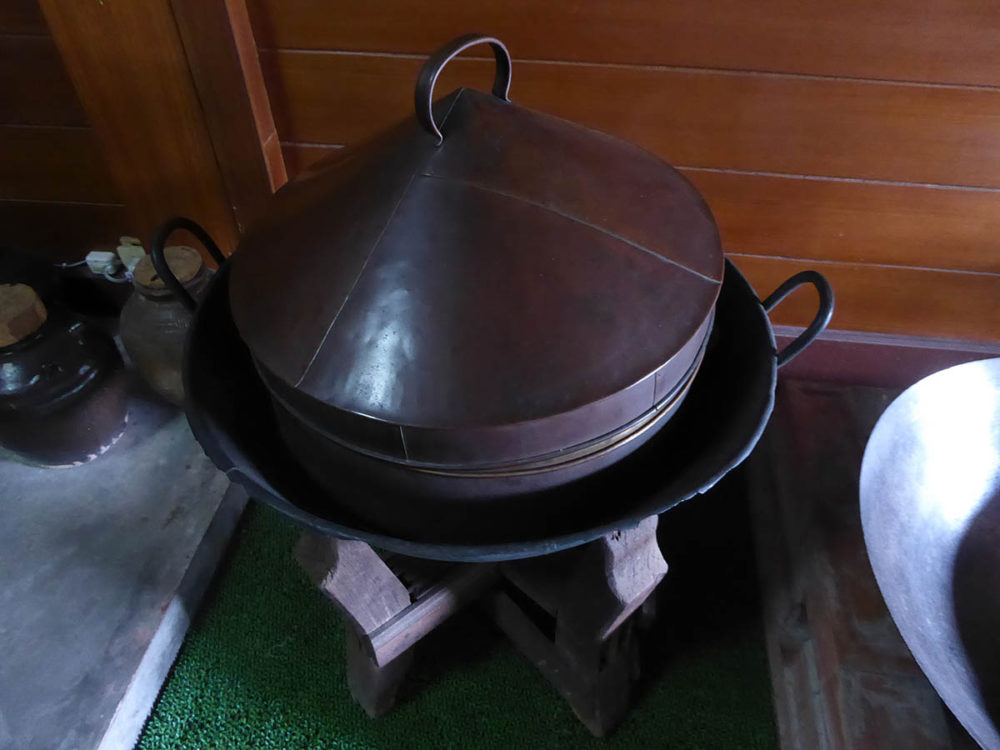
Finely designed kitchenware at the Bangkokian Museum
I ended my trot around libraries and bookshops at Central Embassy, a mall new to me. It’s built on what used to be the plot owned by the British Embassy, which seems to have brexited elsewhere. The top floor of the mall is another of those open-plan shops called Open House. Same retail mix of coffee, bookshop, design library and designer bric a brac. There is what’s called a “high-ceilinged library lookalike”, a Movenpick ice cream stand (go, Switzerland, go!) and an “Eating Deck Zone”. Gamefied versions of bookshops, where most people seem to be browsing but hardly anybody buying. Shelves of McMindfulness. Restaurants that are called something else, using language to suggest that you are at home in the back yard – the deck – or on a space station in a Tarkovsky movie – the Zone. Shelves of royal hagiography. Incongruous mix but no match, such as Sam Beckett sharing shelf life with Crazy Rich Asians – the latter clearly a winner in this space.

Sam Beckett meets the Crazy Rich Asians
For some reason there was a whole run of New York Review of Books on the shelves, most translated from other languages, so I picked up copies of Anna Segers’ Transit and Tatyana Tolstaya’s The Slynx. I read Tolstoya’s short stories years ago and liked them. Segers was part of the German diaspora to Mexico at the start of the Second World War, and wrote Transit there. I also found a first hardback edition of John Berger’s Once in Europa, not cheap at 950Bht. (30CHF / 27€ / 30$). The exact same Berger edition will set you back 13€ on AbeBooks – so not a bargain up in Central Embassy, by a long shot. It has been interesting to look comparatively at the cost of coffee, books and vinyl in hipster Bangkok. Purchasing doesn’t seem to be the point.
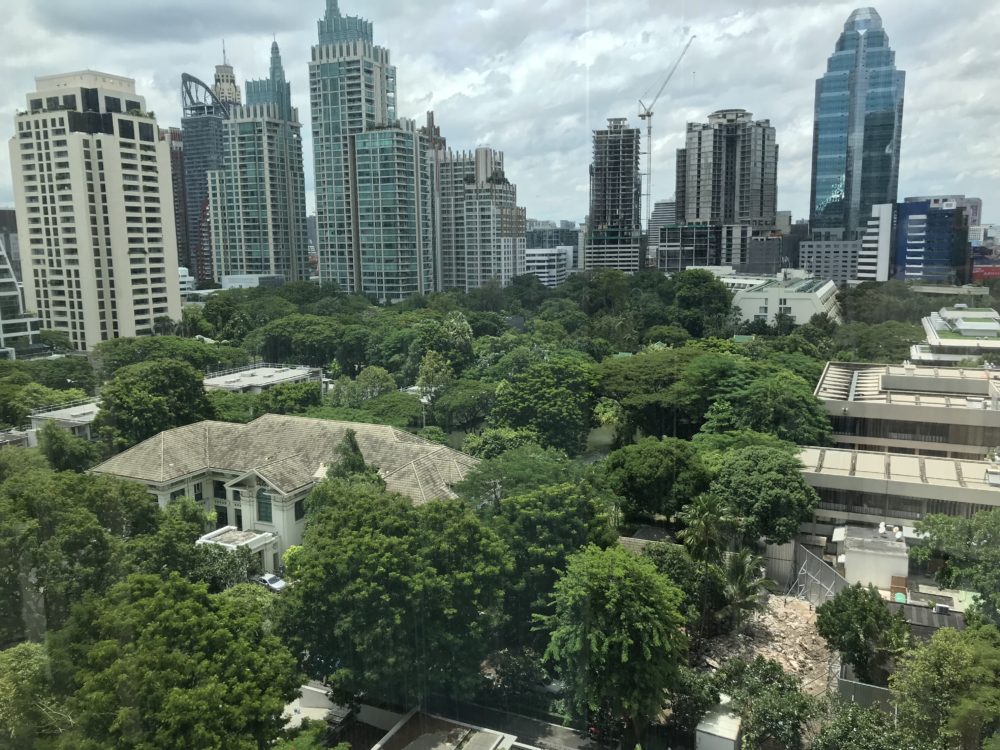
View of the former British Embassy compound, Bangkok.
There’s a fine view, for now, down onto the old British Embassy compound at the back. There was some sort of destruction going on. I hope they preserve the buildings and greenery, where there used to be a fair every year – cake stalls, fish ‘n’ chips, Pimms by the jugful, Marmite galore – but I doubt the green space will survive. Look your last. Watch that space.











